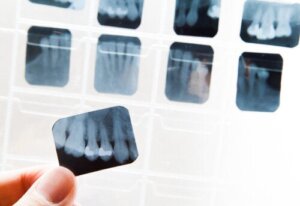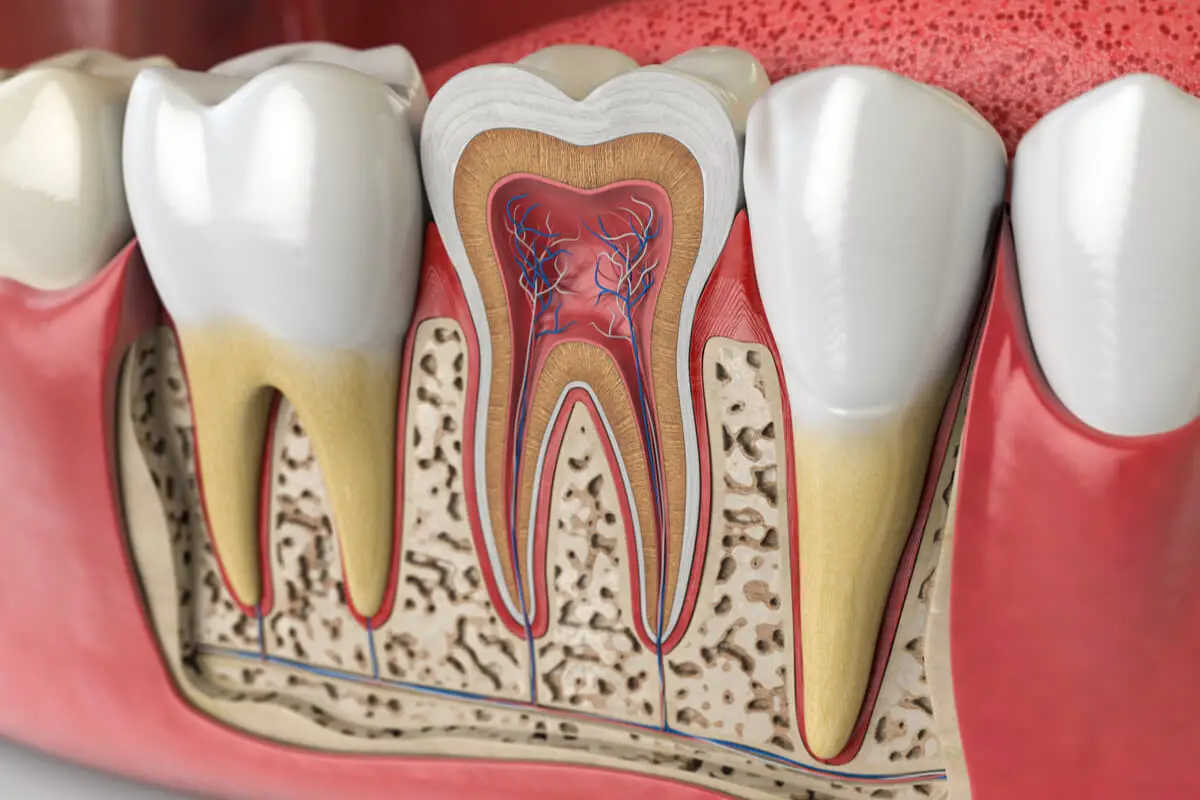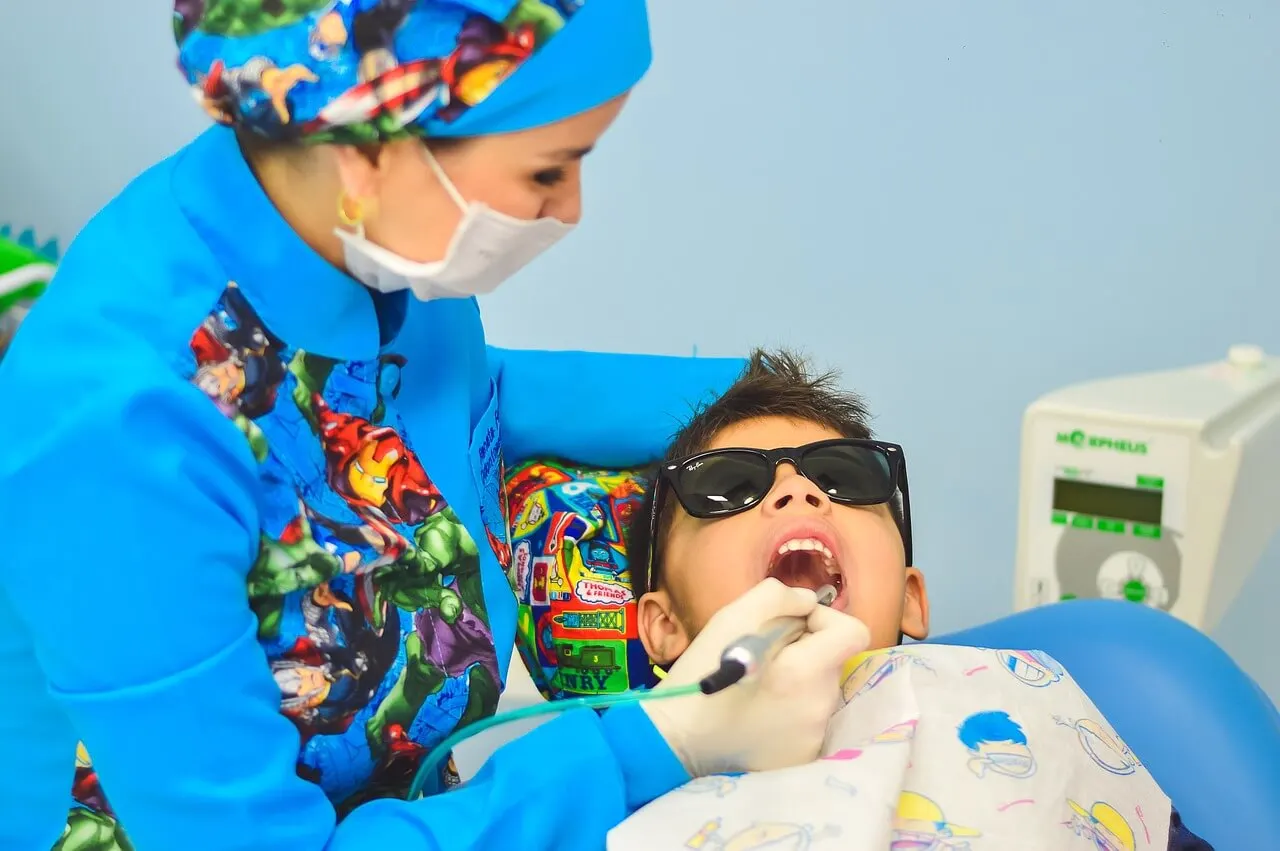What is Dental Ankylosis and How Can it Be Treated?


Written and verified by the dentist Vanesa Evangelina Buffa
Dental ankylosis is a rare disease process that occurs in the root zone of the teeth. This disorder causes the tooth element to become fixed to the alveolar bone that contains it.
Many times, the condition can go unnoticed. However, it’s important to detect the problem because it can lead to complications during tooth eruption and occlusion.
Dental ankylosis can affect both primary and permanent teeth, although it’s much more common in the first dentition. The Office of Rare Diseases of the National Institutes of Health considers it a “rare disease,” i.e., it affects less than 200,000 people in the US population.
The prevalence of ankylosed primary teeth varies from 1.3% to 14.3% of the population. A peculiar fact is that there is a familial tendency for this disorder, so its incidence is much higher among siblings.
In this article, we’ll tell you everything you need to know about dental ankylosis and how denists treat this dental problem.
The periodontium and dental ankylosis
Dental ankylosis is a rare disorder characterized by the fusion of the tooth with the surrounding bone. This union between the tooth root and the bone tissue occurs because the periodontal ligament is destroyed.
To better understand this phenomenon, we first need to understand how the periodontium is formed. Periodontal tissues include the gingiva, the alveolar bone, the root cementum, and the periodontal ligament.
The ligament is composed of collagen fibers that connect the dental root to the alveolar bone that contains it. In radiographs, it can be seen as a small radiolucent space (black color) between the tooth and the bone tissue.
Its function is to hold the tooth in place. In addition, it transmits the masticatory forces that the element receives to the bone so that it can absorb them.
The ligament also allows the teeth to have slight physiological mobility within their alveolus. This means that in the face of more intense forces, the teeth can modify their position. This characteristic is used by orthodontics to move the teeth to the correct position.
When, for various reasons, the periodontal ligament disappears, the root of the tooth fuses to the bone. This is what we know as dental ankylosis.
The permanent direct contact between the tooth and the bone tissue prevents the tooth from having that slight mobility we mentioned. This, as we will tell you later, can cause complications in the dental replacement stage or during some dental treatments.
We think you may also enjoy reading this article: 9 Natural and Effective Tips for Taking Care of Your Teeth
The symptoms of dental ankylosis
Most of the time, an ankylosed tooth looks completely normal, and the disorder can go unnoticed. However, there are some exceptions where the tooth is lower in the line of occlusion.
The absence of the periodontal ligament space around the teeth is noticeable on radiographs. The dental roots also look blurred, and it’s difficult to distinguish the boundary between the dental element and the bone.
The symptomatology of ankylosis depends to a great extent on whether the process occurs during dentoalveolar growth or after it has already culminated – that is, if it occurs during childhood, adolescence or adulthood.
Ankylosed teeth in people who have already completed their bone growth are usually asymptomatic. At the osseous level, progressive replacement resorption usually occurs; this means that the root is resorbed and replaced by bone. The most common consequence is root fracture and detachment of the dental crown without any apparent cause.
The clinical features in growing children and adolescents are more noticeable, especially when it comes to bite conformation. Malpositions of the affected teeth, their substitutes, and antagonists are common.
Thus, the entire occlusion is altered and, with it, the oral functions. The earlier dental ankylosis occurs, the more severe the symptoms will be.

The causes of dental ankylosis
Dental ankylosis occurs when there’s partial root resorption followed by repair with cementum or dentin. This process joins the root of the tooth to the alveolar bone. The causes that give rise to it are not entirely clear, although the following situations are associated with it:
- Genetic factors and family heredity
- Occlusal trauma and dental trauma
- Infections that have affected the alveolar bone
- As a consequence of orthodontic treatments
- Tongue habits that exert constant pressure on the teeth
The phenomenon is much more common in deciduous teeth than in permanent teeth. Most cases occur in primary molars.
What are the consequences of dental ankylosis?
The impact of an ankylosed tooth depends on when the process occurs and how much time the patient has left for their teeth to grow. In a young person, an ankylosed tooth has no mobility, does not follow the physiological eruption, and does not develop together with the other dental pieces and the bone.
For this reason, the ankylosed tooth can become sunken, while the neighboring and antagonist pieces grow around it. It’s common for these elements to lean to cover the space left by the absent or under-occluded tooth.
When the deciduous tooth is ankylosed, it prevents the permanent tooth from erupting normally. Consequently, the adult element remains included within the bone or erupts in an inadequate place in the mouth.
All these alterations in the position of the teeth affect the way of biting and, with this, the normal functions of the mouth. The accumulation of bacterial plaque and the appearance of cavities or gingivitis, problems in speaking and eating, and alterations in the appearance of the smile and face are all consequences associated with malocclusions.
In the case of adult patients with ankylosed teeth, the most common consequences are coronary fractures without apparent cause. Problems during tooth extractions can occur if there was no diagnosis prior to the intervention.
Also, the presence of dental ankylosis prevents conventional orthodontic treatments. For this reason, early detection and treatment are essential to avoid negative consequences.
Like this article? You may also like to read: LED Teeth Whitening: Advantages, Disadvantages, and Care
Diagnosis
Since the process is often asymptomatic, diagnosis is made in the dental office through clinical examination and complementary tests. For this reason, routine dental check-ups from an early age are essential to detect any problem in time.
As mentioned, sometimes the ankylosed tooth presents infraocclusion. Since it hasn’t been able to erupt properly, it’s located below the bite line. In these cases, ankylosis is suspected and can be confirmed with radiographs or CT scans.
Patient questioning is also of particular importance. A history of ankylosis in other members of the family or of having suffered trauma or infections in the mouth can help guide the diagnosis.
Mobility tests and percussions on the teeth also help to define the process. In some cases, when the ankylosed teeth are struck, they may have a characteristic metallic sound, although this isn’t always the case.
Intraoral X-rays and CT scans are tools that can provide information to confirm the disorder. However, one of the most accurate diagnostic tests is the lack of tooth movement after orthodontic forces are applied.
Light orthodontic force is applied for 7 to 10 days on suspected teeth for diagnostic purposes. After this time, dentists observe whether tooth movement has occurred or not.
Treatments
Once the presence of an ankylosed tooth has been confirmed, it’s time to find a solution to avoid the complications mentioned above. The procedures depend on when the problem is addressed and the type of dentition.

Dental ankylosis in children
We’ve already mentioned that baby teeth are the most prone to ankylosis. When this disorder occurs in children, the following two scenarios can occur:
- If there’s a permanent tooth to replace it: In this case, the indicated treatment is the extraction of the baby tooth to favor the correct eruption of the permanent tooth. A space maintainer can be placed until the moment of tooth eruption.
- If there’s no definitive replacement tooth (agenesis): The degree of ankylosis and whether it’s affecting the alveolar bone is assessed. If the ankylosis has occurred at a very early age, the defect will be greater. The tooth should be extracted and the space preserved with a space maintainer for the future placement of an implant at the end of the growth stage. If the ankylosis is later and, therefore, milder, the baby tooth is kept in the mouth and a restorative material or crown is placed to raise its height and correct the underocclusion.
Dental ankylosis in permanent teeth
In cases where dental ankylosis affects permanent teeth, the consequences will depend on the growth stage of the patient. If the patient is an adult, the disorder will have little or no effect on the dentition.
If the ankylosed tooth, on the other hand, is present in a young patient, certain treatment measures will be necessary. This will prevent the negative effects that the disorder may have on arch development and occlusion.
If ankylosis is associated with significant root resorption, extraction and subsequent prosthetic rehabilitation may be necessary. On other occasions, if there’s a vertical discrepancy and occlusion problems, the tooth can be restored with filling materials, or a fixed crown can be placed.
Another alternative, if the case permits, is to dislocate the ankylosed tooth surgically. The bony union of the ankylosis is broken, causing the appearance of fibrous inflammation tissue. This allows the tooth to be repositioned by orthodontics.
Decoronation is currently gaining in popularity as a therapeutic alternative for treating young ankylosed permanent teeth. This procedure consists of removing the crown of the ankylosed tooth, leaving its root in the alveolus to be replaced by bone.
In this way, during the growth stage, the bone volume of the alveolar process is preserved, and atrophy is avoided. When the patient finishes growing, the remaining bone will be thick enough to receive a dental implant without problems and thus rehabilitate the missing teeth.
Finding the problem
Dental ankylosis is a rare disorder that can have an unfavorable prognosis for oral development if it’s not detected and treated in time. Depending on the age at which it appears, its consequences will be more or less negative.
It’s important that when you notice that a tooth doesn’t look right or after suffering trauma or infections in the mouth, you go to the dentist to assess the state of your teeth. Most of the time, with an early diagnosis, it’s possible to avoid complications in the bite and in the development of the face.
Routine dental check-ups are of fundamental value when it comes to finding and dealing with this type of alteration. Therefore, don’t postpone your dental appointments and visit your dentist frequently.
All cited sources were thoroughly reviewed by our team to ensure their quality, reliability, currency, and validity. The bibliography of this article was considered reliable and of academic or scientific accuracy.
- Alruwaithi, M., Jumah, A., Alsadoon, S., Berri, Z., & Alsaif, M. (2017). Tooth ankylosis and its Orthodontic Implication. IOSR Journal of Dental and Medical Sciences, 16(2), 108-112.
- Eşian, D., Bica, C. I., Stoica, O. E., Dako, T., Vlasa, A., Bud, E. S., … & Beresescu, L. (2022). Prevalence and Manifestations of Dental Ankylosis in Primary Molars Using Panoramic X-rays: A Cross-Sectional Study. Children, 9(8), 1188.
- Rosa, D. C. L., SIMUKAWA, E. R., CAPELOZZA, A. L. A., CARVALHO, P. S. P. D., & RODRIGUES, M. T. V. (2019). Alveolodental ankylosis: biological bases and diagnostic criteria. RGO-Revista Gaúcha de Odontologia, 67.
- Miranda, M. P., Pérez, E. M., Velasco, A. A., Escobar, J. I. S., & del Pozo, P. P. (2016). Técnica de decoronación frente al tratarniento de la anquilosis alveolo-dentaria. Actualización. OdOntOl Pediátr (Madrid), 24(3), 207-219.
- Hadi, A., Marius, C., Avi, S., Mariel, W., & Galit, B. B. (2018). Ankylosed permanent teeth: incidence, etiology and guidelines for clinical management. Med Dent Res, 1(1), 1-11.
- Andersson, L., Blomlöf, L., Lindskog, S., Feiglin, B., & Hammarström, L. (1984). Tooth ankylosis: clinical, radiographic and histological assessments. International journal of oral surgery, 13(5), 423-431.
- Lopatková, K. (2021). Decoronación como tratamiento de la anquilosis en dentición permanente joven: revisión de la literatura.
- Cardozo, M. A., & Hernández, J. A. (2015). Diagnóstico y manejo de la anquilosis dentoalveolar. Revista de Odontopediatría Latinoamericana, 5(2).
- Anatoliivna, K. O., & Dmytrivna, K. D. (2021). THE ETIOLOGY, DIAGNOSTICS AND TACTICS OF ORTHODONTIC TREATMENT OF DENTAL ANKYLOSIS. 12March, 2021, 26.
- Sahana, S., Jain, V. K., Kamath, S., Manjunath, K. S., & Pawar, A. (2021). Management of TMJ Ankylosis in Growing and Adult Patients-A Review. Journal of PEARLDENT, 12(2), 18-26.
This text is provided for informational purposes only and does not replace consultation with a professional. If in doubt, consult your specialist.








